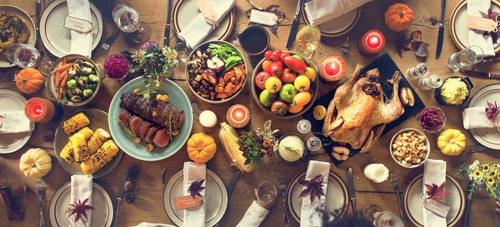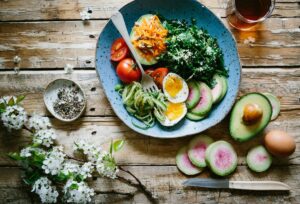
Bringing Intuitive Eating to the Thanksgiving Table
Thanksgiving, and the holidays in general, can be a challenging time for many people in recovery. Whether it’s recovery from an eating disorder, chronic dieting, or trying to break away from diet culture’s influence, the food expectations around Thanksgiving can be hard to navigate. Understandably, occasions can bring up some anxiety about how the meal will go. Relying on intuitive eating practices, though often easier said than done, may help approach the day with a greater sense of calm if someone is working to heal their relationship with food. Here are some strategies:
**Of course, many people do not celebrate Thanksgiving, or have their own special traditions. Hopefully these tips can be applied to any special celebration where food is the focal point.
Eating consistently throughout the day. Yes, even on Thanksgiving, or other holidays with a big meal, you need food throughout the day. It is very common for people to fast early on in the day to “save up” for dinner. However, this can contribute to feeling low on energy where their bodies are depleted from the lack of fuel. Then they will be ravenous once the meal is served, leaving them distracted and disconnected from their internal cues.1 While hunger cues can show up in different ways, fasting or a low food intake sets a person up to eat to the point of uncomfortable fullness at a meal. While there is nothing inherently wrong with eating more than the body needs sometimes, feeling “stuffed” can make a person feel physically unwell. It also perpetuates the restrict, binge, shame cycle, which is a common reason people struggle in their relationship to food. Honoring hunger and providing nourishment throughout the day is an act of kindness to your body on any day.
Consider joyful, mindful movement. There is no reason for you to run the Turkey Trot or fit in a workout unless your body genuinely wants to move in that way. The intuitive eating principle “Movement- Feel the Difference” emphasizes focusing on how it feels in your body, using it as a means of self-care, and letting go of rules on what “counts.” Most of all, it is about making it fun. One way to think about movement is based on what will “fill up your cup,” as in what will be restorative, pleasurable, and give you energy. The holiday brings a day off, and just like any other day there is permission to rest. Maybe it sounds best to take a brief walk while the turkey is in the oven. Maybe you want to relax on the couch. Maybe it’s time to challenge your family members or friends to some friendly competition with indoor or outdoor games. All options are equally valid.
Rethink food judgements and enjoy. It can be really hard to let go of food rules and try foods that you have avoided in the past. It can also be difficult to eat foods you typically feel guilty eating. Approaching the meal with your senses and with curiosity as opposed to judgement may help alleviate some of these feelings. Try all the foods that match your preferences. Pay attention to the colors, aromas, textures, and flavors. You might even find that you like certain foods more than you remember, while another dish you thought you enjoyed might not be your cup of tea. Remember there are no good and bad foods. It may seem counterintuitive, but all foods offer nourishment and serve a purpose in the diet.
Become acquainted with (and normalize) the feelings of fullness. Firstly, it is completely normal to eat more than you were hungry for from time to time, especially when a meal is delicious. Intuitive eating does not mean that you’ll always start eating when you’re hungry and stop when you’re full. It does mean becoming more aware of hunger and fullness and what feels best in our bodies, which can take time to understand. Factors that affect fullness are the amount of time passed since the last meal or snack, the kinds of foods eaten, initial hunger level, the social context, and more.1 Fullness can be a hard sensation due to the way diet culture stigmatizes “overeating.” Giving yourself permission to experiment with fullness and feel full can help increase the trust with your body, strengthening your relationship with food.



